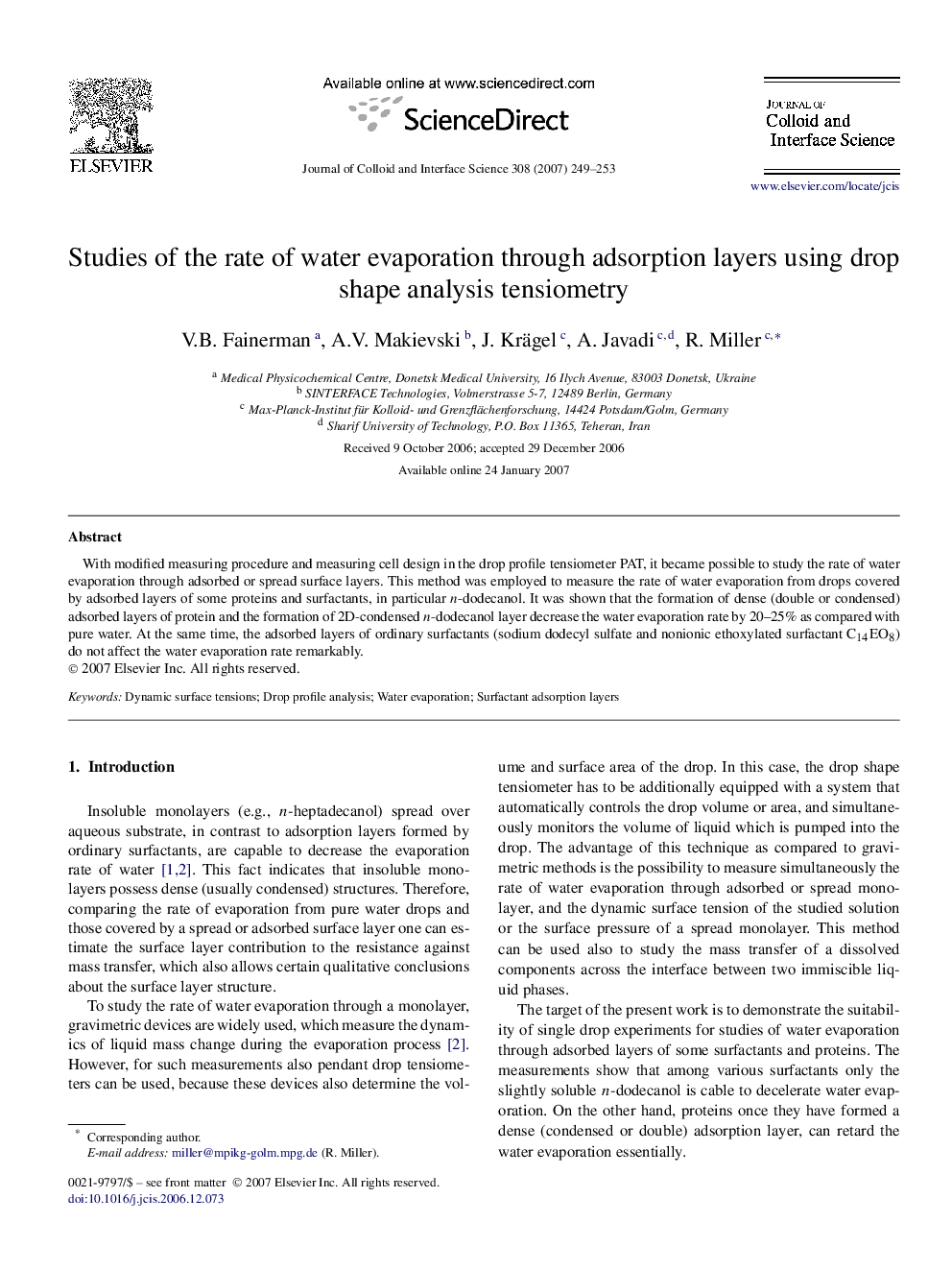| Article ID | Journal | Published Year | Pages | File Type |
|---|---|---|---|---|
| 613101 | Journal of Colloid and Interface Science | 2007 | 5 Pages |
With modified measuring procedure and measuring cell design in the drop profile tensiometer PAT, it became possible to study the rate of water evaporation through adsorbed or spread surface layers. This method was employed to measure the rate of water evaporation from drops covered by adsorbed layers of some proteins and surfactants, in particular n-dodecanol. It was shown that the formation of dense (double or condensed) adsorbed layers of protein and the formation of 2D-condensed n-dodecanol layer decrease the water evaporation rate by 20–25% as compared with pure water. At the same time, the adsorbed layers of ordinary surfactants (sodium dodecyl sulfate and nonionic ethoxylated surfactant C14EO8) do not affect the water evaporation rate remarkably.
Graphical abstractUsing the drop profile analysis tensiometer PAT-1, it is possible to study the rate of water evaporation through adsorbed surface layers. Adsorbed layers of protein and 2D-condensed n-dodecanol layer decrease the water evaporation rate by 20–25% while SDS does not affect the water evaporation rate remarkably.Figure optionsDownload full-size imageDownload as PowerPoint slide
